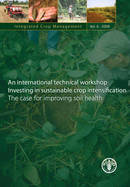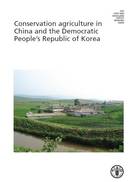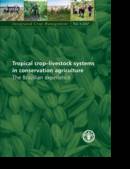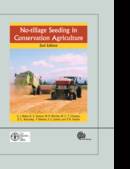Ressources

Reports - This publication is a report of a Workshop that brought together people from a wide range of institutions - farmers, researchers, extensionists, policy makers, donors – from 40 countries who share a common concern about the non-sustainability of ways in which farm land is now being used and who are convinced that this must change. The Workshop, which was hosted by FAO and the UK Tropical Agriculture Association (TAA), focused on the growing evidence of success in the adoption and spread of CA systems in developing countries in Latin America, Asia and Africa, and on ways of mainstreaming CA principles...

Technical guidelines - The present publication on Visual Soil Assessment is a practical guide to carry out a quantitative soil analysis with reproduceable results using only very simple tools. Besides soil parameters, also crop parameters for assessing soil conditions are presented for some selected crops. The Visual Soil Assessment manuals consist on a series of separate booklets for specific crop groups, collected in a binder. The publication addresses scientists as well as field technitians and even farmers who want to analyse their soil condition and observe changes over time.

Papers - This working paper describes the introduction of conservation agriculture in the Democratic People’s Republic of Korea and China by two FAO projects. The technical components, design and results of the projects are summarized. This publication is addressed to readers with a background or an interest in agriculture or those with a developmentrelated professional background.

Technical guidelines - This publication describes how pasture, fodder and livestock production have been integrated into conservation agriculture systems in Brazil’s tropical zones. Vast areas of forest have been cleared in the tropical areas of Brazil for establishment of pastures that become unproductive once the native fertility of the soil is exhausted; this leads to yet more forest clearing.Integrated crop–livestock zero tillage systems allow for the sustainable production of high-yielding pasture without further deforestation; in this system, grazing livestock convert both pastures and crop residues into cash. The ability of pasture to build up the fertility and biological activity of the topsoil is well known. The economics of the system are discussed and...

Publications - This book is a much-expanded and updated edition of a previous volume, published in 1996 as ‘No-tillage Seeding: Science and Practice’. The base objective remains to describe in lay terms, a range of international experiments designed to examine the causes of successes and failures in no-tillage. It summarizes the advantages and disadvantages of no-tillage in general, but takes the view that the case for widespread adoption of no-tillage has already been made by others. The authors have been involved in designing new equipment, but the new edition is notless promotional of any particular product but does highlight the pros and cons of a range of features...
